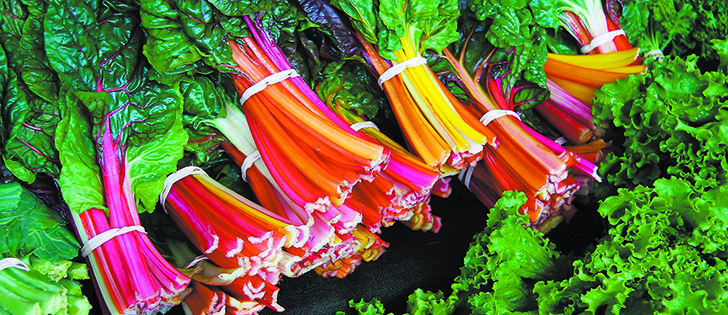Tips for preserving flavour:
Bountiful gardens have many readers wondering what to do with their harvests. I too am wondering what I will do with 33 spaghetti squash, other than donating to friends and the food bank.
If you have a well-loved recipe for any of the following reader requests, please send them along so we can share them.
Send to team@producer.com or TEAM, The Western Producer, Box 2500 Saskatoon, Sask., S7K 2C4.
A reader asked why her canned peaches were turning brown. A B.C. Tree Fruits home economist offered these suggestions.
Read Also

Know what costs are involved in keeping crops in the bin
When you’re looking at full bins and rising calf prices, the human reflex is to hold on and hope for more. That’s not a plan. It’s a bet. Storage has a price tag.
After peeling, immerse the peaches in eight cups (2 L) ice water with four tablespoons (60 mL) of Real Lemon. An alternative is to use four tablespoons (60 mL) of Fruit-Fresh mixed in the water.
For all canning, the use of bottled or filtered water is recommended because the minerals in some household water can cause colour changes in the fruit. When canning peaches, do not use the pit. Rather, split the pit open and use the nut inside for added flavour.
Another option is to add almond extract to the canning liquid.
- Harvest early in the morning, especially if the weather is hot.
- Harvest the corn at its peak of maturity when the kernels are tender with a milky fluid, avoid bloated kernels. Immature corn is watery when cooked and over-ripe corn is chewy and doughy.
- Process promptly after harvesting, or keep cooled in the fridge or with ice.
- Remove husks and silk. Blanch in boiling water the length of time indicated by the cob diameter:
- Cool in ice water the same length of time blanched in boiling water.
- Wrap ears individually in moisture/vapour proof film the pack wrapped ears in freezer bags or vacuum package.
- For kernel corn, blanch ears five to six minutes. Cool, drain and cut corn from the cob, seal in freezer bags.
A reader is looking for a recipe for Swiss chard pickles. Swiss chard is like two vegetables in one. The leaves are often used like spinach and the celery-like stems discarded.
I use the leaves in a mixed green salad or add chopped leaves to pasta sauce or a stir fry. The stems can be cut and used like celery. The following marinated Swiss chard stem recipe is like a salad or condiment.
- 3 c. stems trimmed 750 mL
- from Swiss chard leaves
- 2 c. vegetable stock 500 mL
- or water
- 1 bay leaf
- 1 1/2 tbsp. extra virgin 22 mL
- olive oil
- 1/2 c. cider vinegar 125 mL
- 1/2 tsp. sugar 2 mL
- salt and freshly ground black pepper
- Cut stems in pieces 1/2-inch (1 cm) wide and two inches (5 cm) long.
- Place in saucepan with stock and bay leaf, simmer 10 minutes until tender.
- Drain and place in shallow glass or ceramic dish with bay leaf.
- Mix oil and vinegar together and pour over chard stems. Season with sugar, salt and pepper.
- Refrigerate and marinate overnight or up to four days before serving.
Bev Burletoff had a recipe that was a big hit with her family and friends for zucchini relish, but the recipe has gone missing. This recipe from allrecipes.com may be what she is looking for.
- This relish is delicious on hamburgers and hot dogs or added to homemade dressings, potato, egg or tuna salad or served with meat sandwiches.
- 12 c. unpeeled zucchini, 3 L shredded
- 4 c. onion, chopped 1 L
- 5 tbsp. pickling salt 75 mL
- 1 red bell pepper, chopped
- 1 green bell pepper, chopped
- 6 c. white sugar 1.5 L
- 2 1/2 c. white pickling 650 mL
- vinegar
- 1 tbsp. cornstarch 15 mL
- 3/4 tsp. ground nutmeg 3 mL
- 3/4 tsp. ground turmeric 3 mL
- 1 1/2 tsp. celery seed 7 mL
- 1/2 tsp. ground black pepper 2 mL
- Note: Pickling vinegar is seven percent acetic acid by volume, while white vinegar is five percent acetic acid by volume. Use pickling vinegar if recipe calls for it.
- Place the zucchini and onion in a large, non-metallic bowl and sprinkle the salt over top. Stir to evenly distribute the salt. Cover and refrigerate overnight.
- The following day, drain the zucchini in a cheesecloth-lined colander and rinse well with cool water. Gather up the cheesecloth, squeeze out the excess water and set aside.
- Place the chopped red and green bell pepper, sugar, vinegar and cornstarch into a large pot. Add the nutmeg, turmeric, celery seed and pepper. Stir to combine, add the drained zucchini.
- Bring to a boil over medium-high heat, reduce heat to medium-low and simmer 30 minutes, stirring occasionally to prevent scorching.
- Place seven one pint (500 mL) Mason jars on a rack in a boiling water canner, cover jars with water and heat to a simmer (180 F/82 C). Set screw bands aside. Heat sealing discs in hot water, not boiling (180 F/82 C). Keep jars and sealing discs hot until ready to use.
- Pack relish into sterilized jars, use a rubber spatula or plastic knife to remove air bubbles. Wipe jar rim to remove food residue. Centre hot sealing disc on clean jar rim.
- Screw band down until resistance is met, then increase to fingertip tight. Return filled jar to rack in canner. Fill the remainder of the jars.
- When canner is filled, ensure all jars are covered by at least one inch (2.5 cm) of water. Cover canner and bring water to full rolling boil before starting to count processing time. At altitudes up to 1,000 feet (305 m), process and boil filled jars for 30 minutes.
- When processing time is complete, remove canner lid, wait five minutes, then remove jars without tilting and place them upright on a protected work surface.
- Cool upright, undisturbed, for 24 hours. Do not retighten screw bands.
- After cooling, check jar seals. Sealed discs curve downward and do not move when pressed. Wipe and dry jars. Label and store in a cool, dark place. For best quality, use home canned foods within one year.
- I have found that a food processor does a poor job of peppers, leaving large pieces of skin.
- Chopping with a knife gives more uniformity and keeps the skin and pulp intact, resulting in a nicer relish.
- Current food safety recommendations indicate that all pickles must be processed to ensure all microorganisms that cause food spoilage are destroyed and that air in the headspace is vented out to give a strong vacuum seal.
- Yields seven pints (7 – 500 mL jars).
- Adapted from allrecipes.com.
Several readers have asked for recipes using wild meats. If you have any butchering or preparation tips for handling wild game or recipes, please send them to share with our readers.
- Swiss chard comes from Sicily, not Switzerland.
- It is also called white beet, strawberry spinach, seakale beet, leaf beet, Sicilian beet, Roman kale and silverbeet.
- Chard is high in vitamin K, fibre and protein and has an anti-inflammatory and detoxifying effect on the body.















